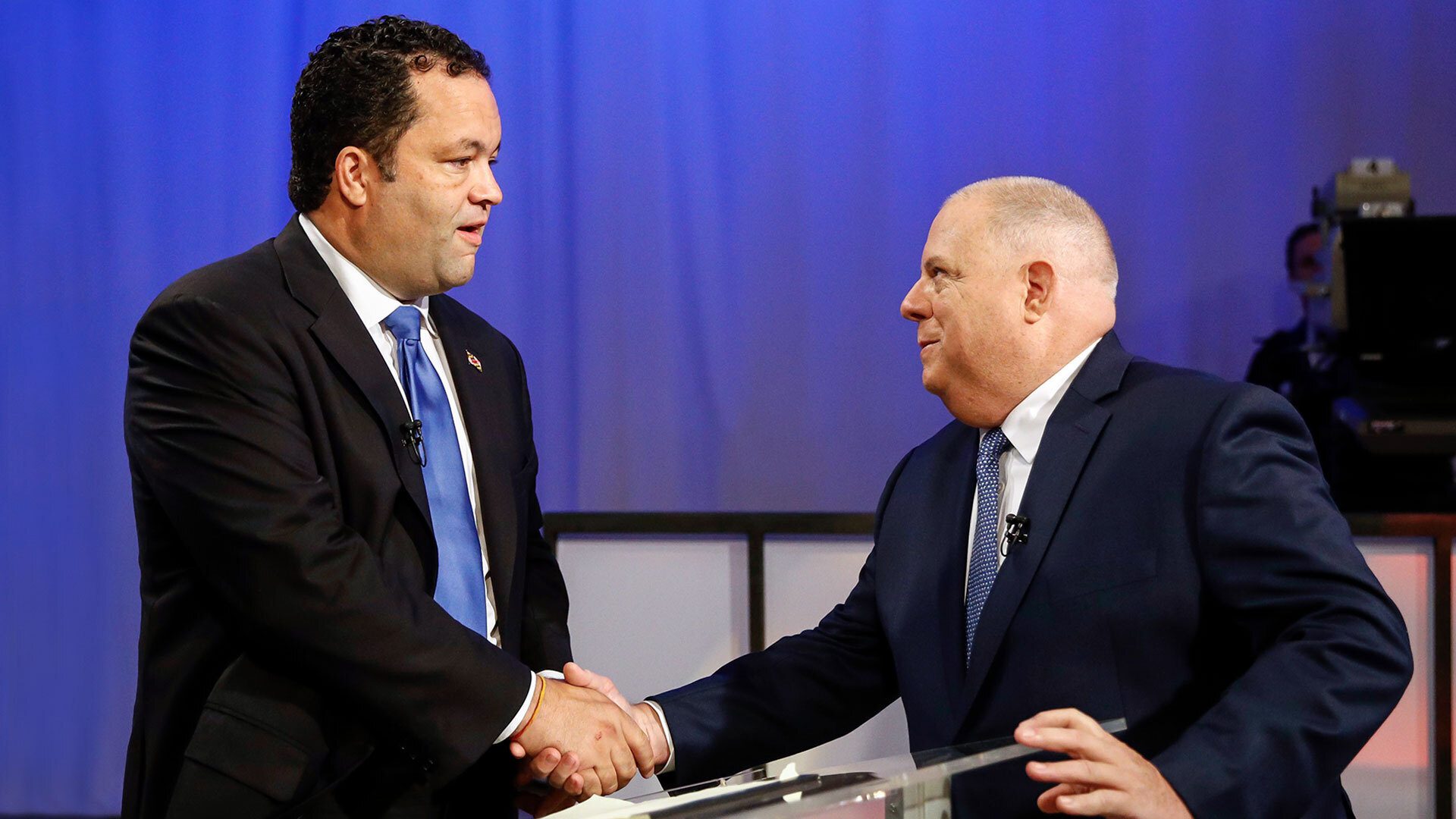- October 10, 2018
- By Sara Gavin
With less than a month remaining until Election Day, Maryland Gov. Larry Hogan holds a commanding 20-point lead over Democratic challenger Ben Jealous among registered voters, up from a 12-point advantage in June, a new Washington Post-University of Maryland poll released yesterday showed.
If the election were held today, 56 percent of registered voters polled said they would vote for Hogan, while 36 percent said they would vote for Jealous.
While the results showed Hogan is roughly tied with Jealous among voters under 40, Hogan has a strong lead with voters ages 40–64 as well as seniors.
“Gov. Hogan’s wide lead among older voters spells more trouble for Democratic candidate Ben Jealous,” said Michael Hanmer, professor of government and politics and research director of UMD’s Center for American Politics and Citizenship. “Younger voters are less likely to vote during midterm elections, so Jealous’ campaign will have to bump up its grassroots and digital advocacy to get young people motivated."
The poll results also demonstrate that Marylanders overwhelmingly approve of Hogan’s job performance. Hogan had a 68 percent favorable rating among registered voters and 76 percent of voters polled said they would rate the state economy as excellent or good. When asked whom voters would trust more to handle policy issues, Hogan led by double digits in every category including taxes, health care and public education.
If Hogan wins a second term on Nov. 6, 57 percent of voters surveyed said they would rather see the Maryland legislature controlled by Democrats to act as a check on Hogan.
“The strong support for Gov. Hogan indicates that Maryland is not following the national trend; there is a separation between national and state politics,” said Stella Rouse, associate professor of government and politics and CAPC’s director. “Maryland voters seem to be more concerned about the state than casting their vote as a referendum on what is occurring in Washington.”
This Washington Post-University of Maryland poll was conducted by telephone Oct. 4–7 among a random sample of 870 state residents, including 814 registered voters. The results from the survey and the sample of registered voters both have a margin of error of plus or minus four percentage points; the error margin is 4.5 points among the sample of 648 likely voters. Sampling, data collection and tabulation were by Abt Associates of Rockville, Md.
The University of Maryland and the Washington Post first teamed up to present the poll in October 2014. Polls have focused on Maryland elections, desired priorities for elected officials and topics of interest to voters including immigration, taxes, education and health care.
The partnership combines the reporting, polling and public engagement resources of The Post with rigorous academic analysis from the College of Behavioral and Social Sciences’ Department of Government and Politics. The poll is designed to provide academics, students and members of the public with insight into key races and issues of importance to Maryland residents.
In addition to its impact as a public education tool, the poll also represents a unique research opportunity for UMD students, who help design poll questions and analysis the responses.
The poll is directed by Scott Clement and Emily Guskin ’06 at The Post, as well as by Hanmer and Rouse.
